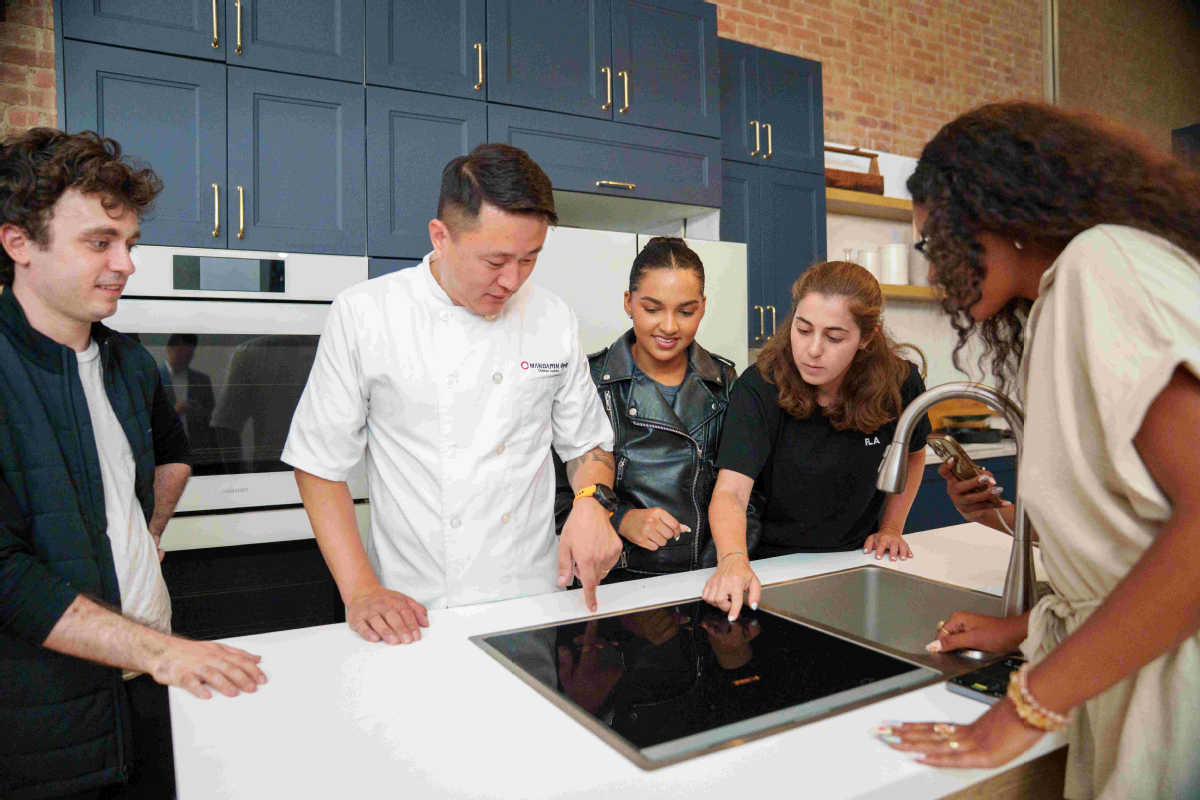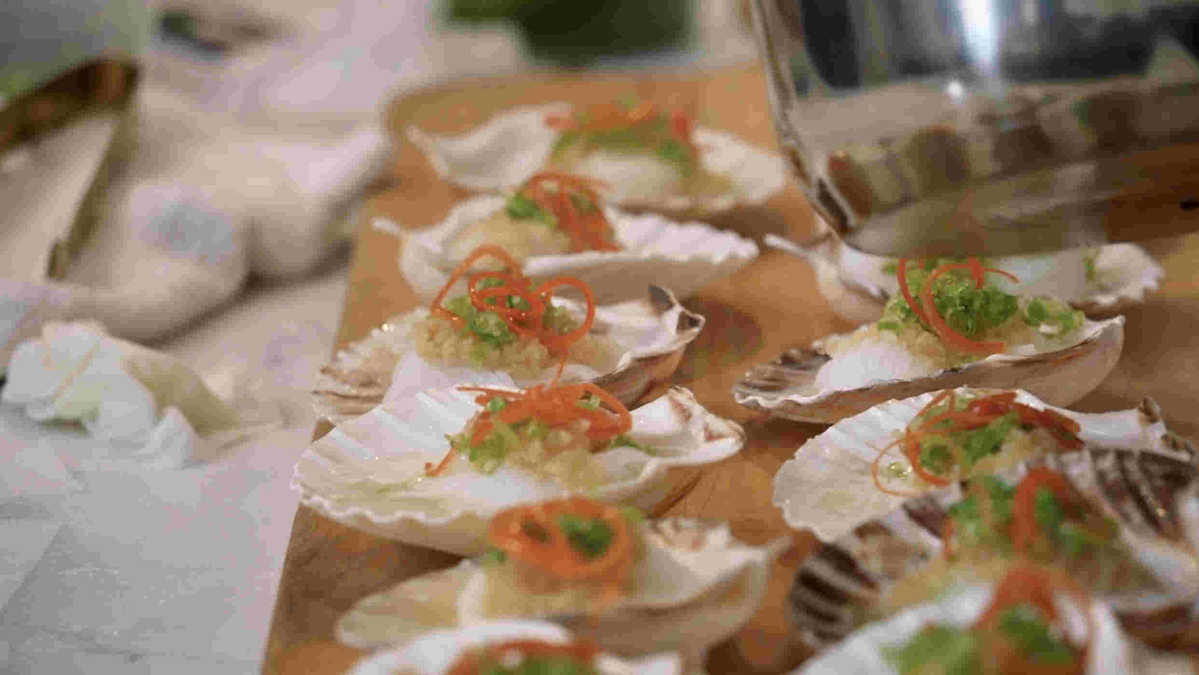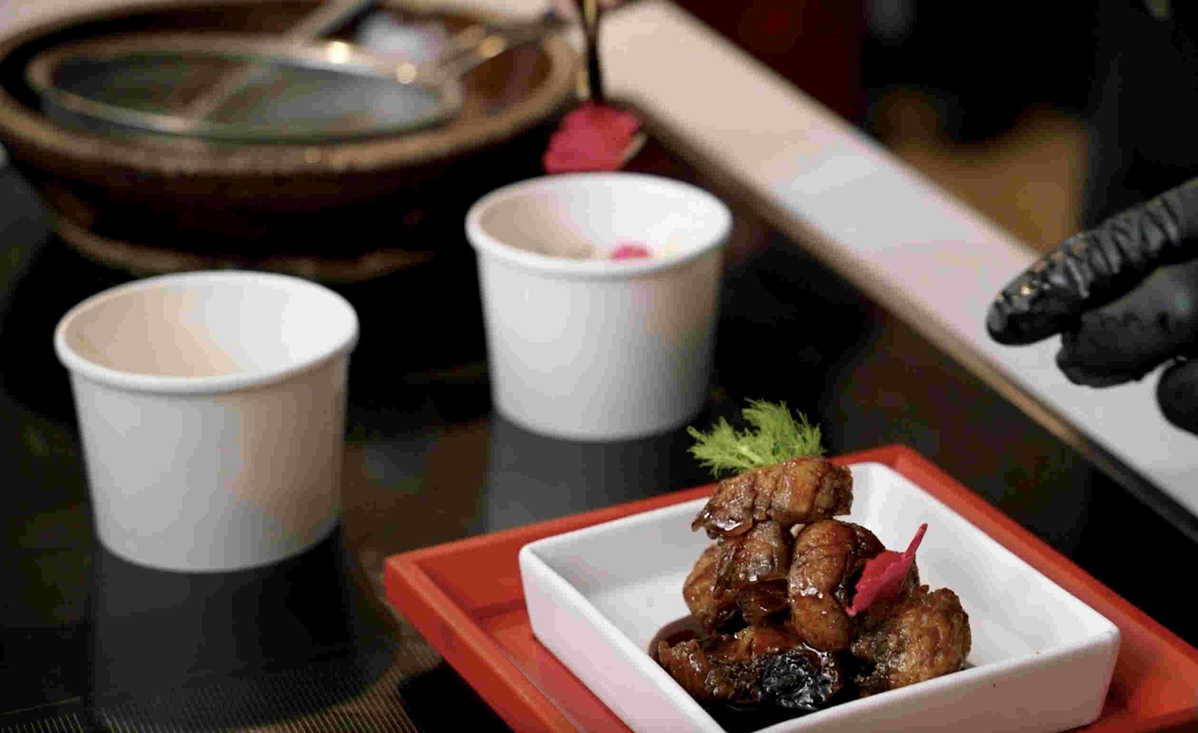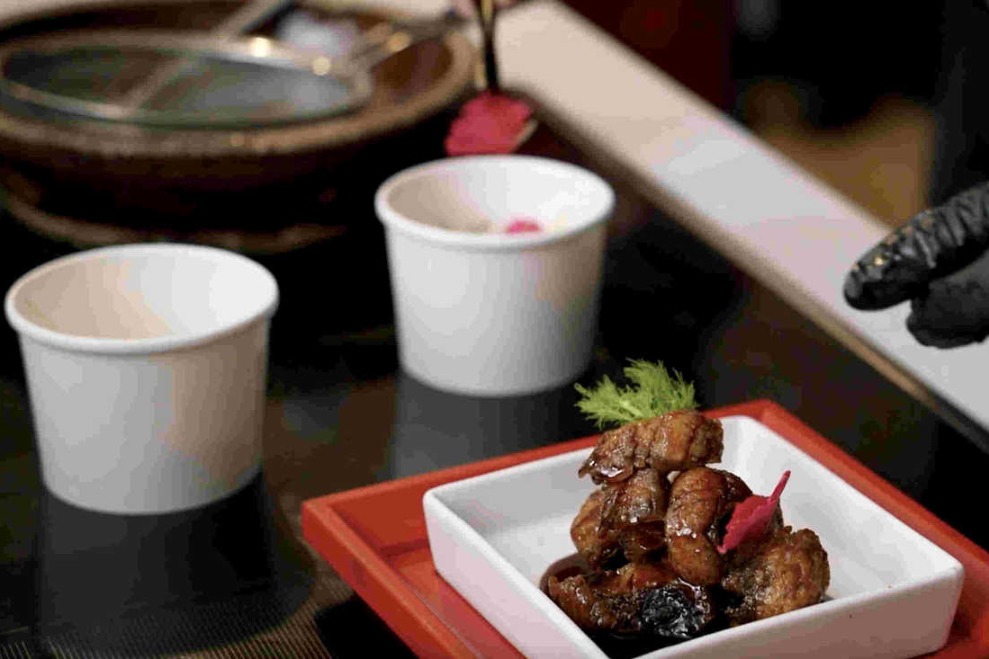Chinese cuisine fuses East and West


The delicious, rich aromas of Chinese cuisine were wafting out of a window on Broadway as chefs demonstrated their signature dishes at the cultural event Flavors from the East | Chinese Cuisine Takes New York at Production Central in New York on Sept 9.
Hosted by the North America Asian Food Industry Association and premium Chinese kitchen appliance brand Fotile, the gathering showcased the depth and beauty of Chinese culinary traditions through live demonstrations, tastings and cross-cultural dialogue.
With the theme "Food as a Bridge, Culture as a Medium," the event brought together around 50 distinguished guests, including media representatives, cultural figures and food industry insiders to promote a deeper understanding of Chinese food culture, and strengthen ties between Chinese and American communities through shared culinary experiences.

"I'm sure we can all agree that food is more than what's on the table — it's about culture, family and bringing people together, through the flavors we love and the stories we share," said Hu Beichen, a representative from the North America Asian Food Industry Association. "Gatherings like this let us celebrate that connection and, of course, enjoy good food."
Four chefs were there to share their knowledge and cook Chinese cuisines.
Eric Gao, executive chef at O Mandarin and a James Beard Award semifinalist in the category "Best Chef: New York State", presented the Northern Chinese dish spicy shredded tofu with peppercorns and steamed scallops with vermicelli and garlic — a classic preparation for scallops in China.
Chef Howie Wang from Iden & Quanjude, a franchise of the renowned Chinese Beijing duck chain Quanjude that dates back to 1864, was up next with his creative dishes. Although he couldn't bring the famous Beijing duck due to a lack of equipment, he presented two East-meets-West fusion dishes: crystal nectar foie gras rolls and seared Miyazaki wagyu cubes with peppers and soy sauce.

Chef Kee Wei Meng from CheLi presented the Southern Song Dynasty (1127–1279) style Beggar's Chicken, which is wrapped in clay and lotus leaf, then slowly baked over low heat.
The name comes from a legend about a starving beggar who stole a chicken, wrapped it in mud and roasted it over a fire due to a lack of cooking tools. The chicken turned out to be surprisingly delicious.
When the chicken was done, it emerged as a large blackened clay shell. The chef lit it on fire to recreate the ancient look and invited an attendee to crack it open with a hammer.
There was also Shanghai smoked fish, a classic traditional Shanghainese dish that dates back over 170 years. The chef triple-fried marinated fish fillets, then dipped them in a sweet and sour sauce and topped them with a sprinkle of osmanthus.
Lastly, Chef Jiang Wentao, the fourth-generation inheritor of the "Erhe Sanzheng" Hubei steaming cuisine family, placed four teapots with burning candles underneath on the table. Inside, pork ribs and lotus root were slowly cooking. He served the soup in teacups to event attendees.
While the soup was cooking, he filleted a fresh fish and sliced it, then ground some of the meat and mixed it with a marinade that included ginger and scallion. He wrapped the ground mixture in fish fillets and steamed them.
Jiang serves as a consultant for the Chinese Culinary Culture Association and mentioned that he aims to bring out the original flavors of food through his cooking.
Ariel Espinal, an event attendee, said, "I love all the combinations of flavors and spices, it really brings a new palate to my everyday life".
He added, "I really enjoyed the food … including all the ingredients I've never really had on a normal day-to-day basis. It's always a pleasure to try new dishes, new spices, new textures."
The event wrapped up with Jiang's mahjong shaped dessert using Chinese yam. He even hand-painted these desserts with Chinese letters and mahjong symbols.
As part of the cooking process, the chefs used Fotile's new-generation 3-in-1 in-sink dishwasher. In addition to its ability to efficiently complete a cycle in just 15 minutes, it was also used to clean fruits and seafood for the festival's gourmet dishes — effectively removing chemical residues, mud and harmful bacteria.
Fotile, a high-end Chinese kitchen appliance brand founded in 1996, entered the US market nine years ago. It has won numerous awards and owns over 8,000 patents for its products.
"Made-in-China products have gained increasing recognition in the global market in recent years, thanks to growing innovation and high-quality standards. As one of the leading companies contributing to this success, Fotile is proud to be part of this movement," said Li Yinping, general manager at Fotile America.
Li said tariffs have been challenging for Fotile's business operations, but he hopes for "a more open and cooperative global trade environment" in the future so "more American households can benefit from the intelligence and quality of Chinese manufacturing."
As a sponsor of the event, Fotile wanted to exhibit not only China's profound cultural heritage but also cutting-edge innovation in cultural and technological fields.
"We believe that such exchanges not only enhance the global influence of Chinese culture, but also inject positive energy into mutual understanding and communication between China and the United States," Li said.
The event and food did bring people closer, at least for James Immordino, 44, an event attendee who said he had been talking with others about their experiences in China and exchanging ideas.
"I think it's great to have cultural exchange … I think food is often very integrated into culture and family, and so exchange of food and traditions around food — it has broader implications. It's a very people-oriented thing. So, trying different food, sharing food, it brings people together. I think it's a wonderful thing," said Immordino.

































